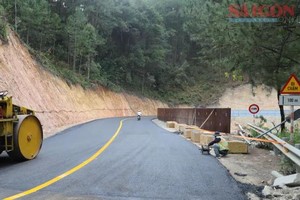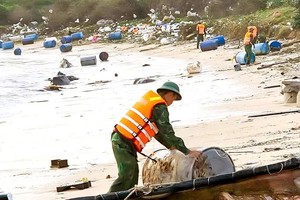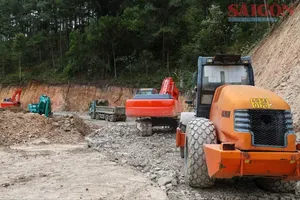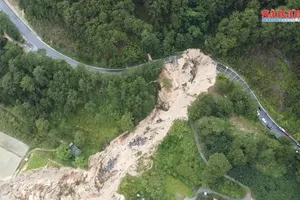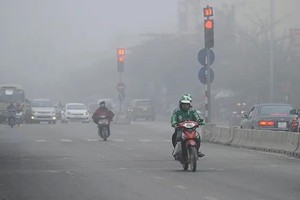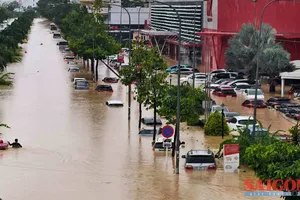
This morning, many areas in Nghe An Province suffered severe damage from tropical Kajiki. According to a consolidated report from the Department of Dyke Management and Natural Disaster Prevention and Control, at least one person has died and four others were injured in Ha Tinh Province. Quang Tri Province also recorded four injuries. Housing damage has been extensive, with 621 houses losing their roofs and 144 houses submerged in Ha Tinh.
Strong winds and heavy rainfall have caused widespread disruption, with many areas isolated and facing heightened risks of flash floods and landslides in the two provinces. Power supply and telecommunications systems in some locations have also been affected. Local authorities have advised residents to limit travel and closely monitor official warnings and updates.
The Department of Dyke Management and Natural Disaster Prevention and Control, under the Ministry of Agriculture and Environment, reported severe agricultural losses. Accordingly, some 16,346 hectares of rice fields were inundated, including 13,327 hectares in Ha Tinh Province, 2,108 hectares in Quang Tri Province, and 911 hectares in Ninh Binh Province. In addition, 611 hectares of vegetables, 2,058 hectares of fruit trees, and 4,443 shade trees in Ha Tinh Province were damaged.
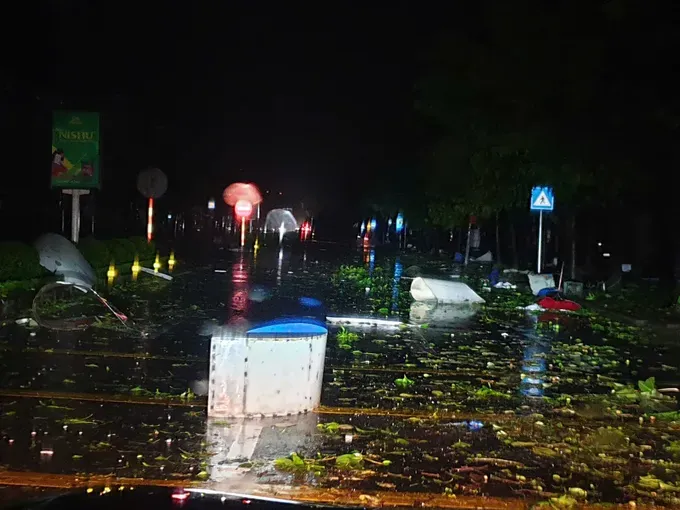

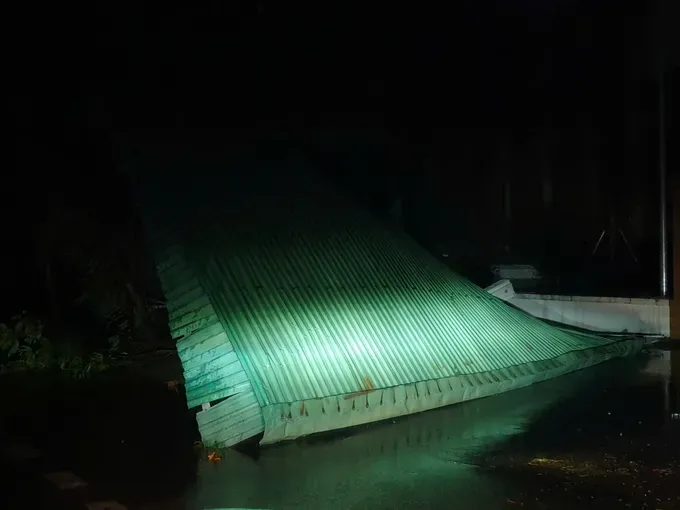
Transportation in many areas has been paralyzed by landslides and flooding. In Quang Tri Province, three landslide points were reported in Dong Le and Thuong Trach communes.
Numerous roads and low-water crossings in provinces Nghe An, Ha Tinh, and Quang Tri were submerged, hindering mobility and relief efforts. The electricity system in Ha Tinh Province was heavily impacted, with 22 utility poles broken or toppled. Local authorities are focusing on immediate recovery efforts while continuing inspections and assessments to update the full extent of the storm’s damage.
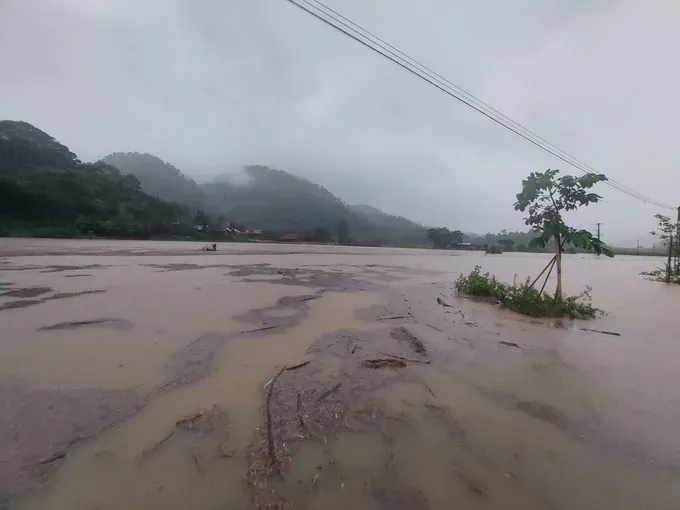
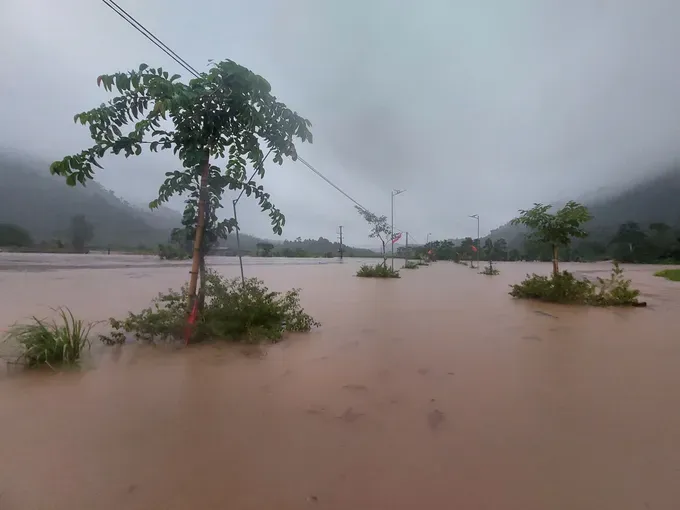
This morning in Tien Phong Commune of Nghe An Province, heavy rains have caused water levels to rise. Several villages, including Dan, Na Chang, Hanh Tien, and Long Tien, have been deeply flooded and isolated. To ensure public safety, local authorities have evacuated households from high-risk areas to safer locations.
According to the Ministry of Agriculture and Environment, more than 600 houses had their roofs blown away, and 144 houses were flooded. In light of the prolonged heavy rainfall and flooding following the storm, on the afternoon of August 25, the Department of Domestic Market Management under the Ministry of Industry and Trade issued an urgent letter to the departments of Industry and Trade in the provinces and cities of Quang Ninh, Hai Phong, Hung Yen, Ninh Binh, Thanh Hoa, Nghe An, Ha Tinh, Quang Tri, Hue, Da Nang, Quang Ngai, and Gia Lai, requesting the assurance of supply for goods, food, and essential items for the population, particularly in areas at risk of being isolated.
Businesses, supermarkets, and fuel traders are encouraged to proactively supply and stock essential items such as food, drinking water, fuel, roofing sheets, and steel plates. Supermarkets are reallocating goods from neighboring localities to the areas affected by the storm to prevent shortages.
From noon to evening on August 25, Hanoi was hit by torrential rain, leaving many residents stranded and unable to return home due to the downpour. Many people turned to buses and the metro to avoid traffic congestion caused by the heavy rain and strong winds.
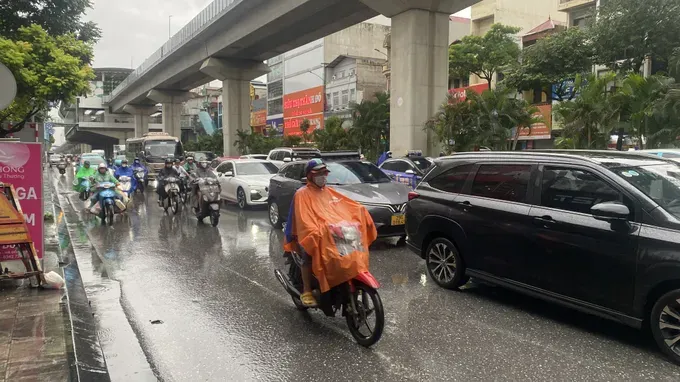

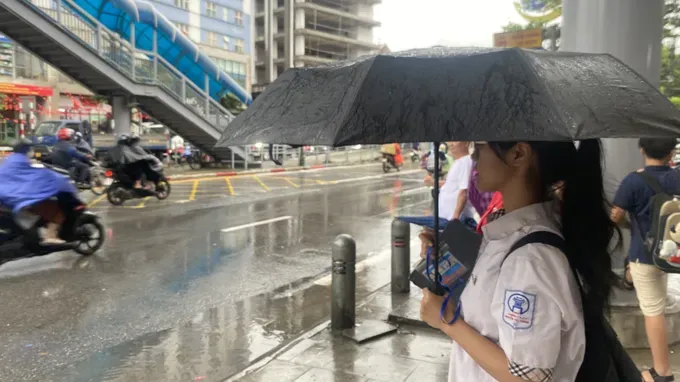
As per Vietnam’s national weather forecast agency, after making landfall over the North Central Coast of Vietnam at around 5:00 p.m. on August 25, storm Kajiki continued to move further inland across Vietnam and into Laos.
According to the Japan Meteorological Agency (JMA), as of 21:00 UTC on August 25 (4:00 a.m. on August 26, Vietnam time), Kajiki remained at tropical storm strength, with a central pressure of 996 hPa, maximum sustained winds of around 74 km/h, and gusts reaching approximately 111 km/h. The Joint Typhoon Warning Center (JTWC, USA) also confirmed at the same time that Kajiki was still classified as a tropical storm and had not weakened into a tropical depression.
Meteorological experts noted that Kajiki’s ability to maintain tropical storm intensity even after moving deep into Laos indicates that its circulation structure remains relatively well-organized. As a result, widespread heavy rainfall and strong winds are still affecting North Central Vietnam, Laos, and parts of Thailand.
The National Center for Hydro-Meteorological Forecasting has predicted that heavy rainfall will continue on August 26 across the northern midlands and Red River Delta, as well as in the provinces of Lao Cai, Son La, Thanh Hoa, and Ha Tinh. Rainfall amounts are expected to range from 50–100 mm, with some areas exceeding 200 mm. There is also a risk of extremely heavy downpours of more than 100 mm within a three-hour period.
In Hanoi, heavy rain accompanied by thunderstorms is expected to persist, while Da Nang will remain dry. In Ho Chi Minh City, scattered showers and thunderstorms are forecast for the late afternoon and evening. On August 26–27, Upper and Central Laos are expected to receive 100–250 mm of rainfall, with some areas experiencing more than 500 mm.

